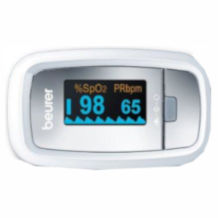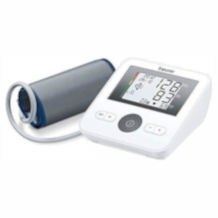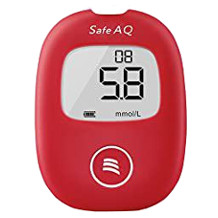Ear thermometer purchasing advice: how to choose the right product
- What you need to know
- Compared to digital clinical thermometers, the measurement with an ear thermometer is done by infrared radiation and thus without body contact.
- An ear thermometer allows a more accurate measurement of body temperature than other thermometers and is also more comfortable to use.
- Taking a temperature through the ear is very quick and not scary, especially for children.
- A distinction is made between simple ear thermometers and combined forehead-ear thermometers as well as ear thermometers especially for small children.
- For the purchase of an ear thermometer, the following are of central importance: ergonomics, quality, operating time, cost and accuracy of the device.
Fast and accurate fever measurement
Winter time is cold time. Of course, not every infection immediately leads to a severe cold or even flu. But it certainly makes sense to keep a close eye on the course of such an illness. This includes checking the body temperature with the help of a clinical thermometer. A fever is not bad in itself. On the contrary – the increased temperature is a natural and important reaction of the body.
The immune system fights against the viruses and bacteria and thus prevents a more serious course. In order to be able to react to aggravations in time and appropriately, it is advisable to take the temperature regularly.
In the past, fever thermometers with mercury readings were used. But those days are over. Since 2009, thermometers with mercury have even been banned in the EU because the heavy metal poses health risks. Nowadays, digital thermometers are generally used, either classic contact thermometers or modern infrared thermometers such as ear or forehead thermometers. Within this new generation of fever measuring devices, ear thermometers in particular are becoming increasingly popular because they provide extremely fast and accurate results.

How does an ear thermometer work?
An ear thermometer measures the heat radiation in the ear and thus determines the general body temperature. To do this, the device is positioned at the auditory canal. The measurement of the infrared radiation at the eardrum takes place without touching, which many people find very pleasant. The rays are sent via a lens to the sensor in the thermometer and processed there. The digital display shows the result within seconds. In contrast to conventional contact thermometers, an ear thermometer transmits a result after only one to five seconds.
Many models also automatically save past fever measurements, which makes it easier to observe the course of the illness and allows corresponding conclusions to be drawn about the duration of recovery. Some ear thermometers also give warning signals if the body temperature rises into a threatening range.
Practice leads to success
An ear thermometer works without contact and achieves very accurate measurement results when used correctly. An important prerequisite is to follow the instructions for use of the device exactly. If you decide to buy an ear thermometer, you should study the technical requirements and train a few hand movements.
Accurate placement of the thermometer or probe on the eardrum is essential to avoid incorrect measurements. Modern devices already have integrated warning systems that draw attention to measurement errors. If the device is not handled properly, corresponding information appears on the digital display or a warning signal sounds. This way, you as the user know that the thermometer was not placed correctly in the ear and that the measurement must be repeated. Practice certainly makes perfect.
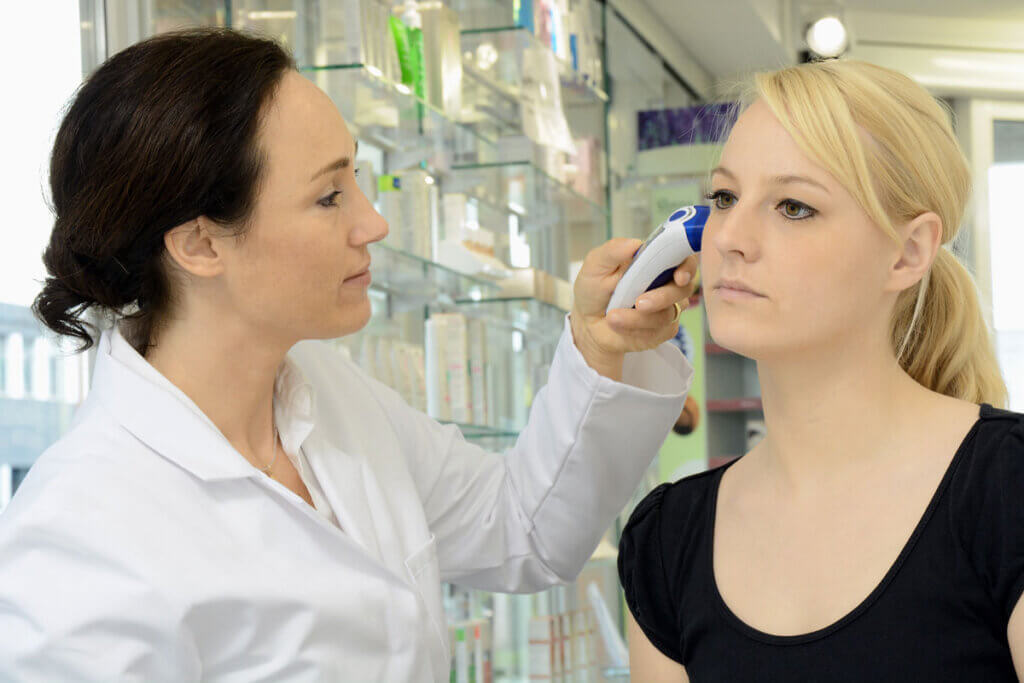
What are the advantages of an ear thermometer?
Like any thermometer, an ear thermometer has advantages and disadvantages. But the advantages clearly outweigh the disadvantages, as long as a few points are taken into account. Ultimately, the benefits and practicability of a clinical thermometer become apparent when it is used in an uncomplicated manner. If ear thermometers are used correctly, they are convincing because of their accuracy and pleasant handling. They are very practical to use, fit well in the hand and allow a pleasant measurement: fast, painless and without body contact. These advantages are especially noticeable when taking a fever frequently, especially for children. Another big plus for the ear thermometer from a hygienic point of view are the replaceable protective sleeves for the measuring tip.
The following table summarises the advantages and disadvantages of ear thermometers.
Pro points
- Fast measurement result
- Contactless, painless and easy to use
- Very accurate results when used correctly
- Especially suitable for children
- Very hygienic due to the protective sleeves
Drawbacks
- Requires practice in use
- Cannot be used for ear infections
- Protective covers cause costs
- Can only be used from the age of 6 months
Contact thermometer or infrared thermometer
Conventional contact thermometers have the advantage that they measure extremely accurately. Especially in the case of high fever, when every tenth of a degree is really at stake, these thermometers guarantee great safety. The formerly widespread thermometers made of mercury have disappeared in the meantime. The toxic heavy metal was too dangerous and could escape if broken. The metal tips of today’s contact thermometers are made of a metal alloy that is harmless to health.
Many people nowadays use the unbreakable, relatively fast and easy-to-read digital contact thermometers. In addition, the trend has been moving more and more towards infrared thermometers, especially recently. These ultra-modern measuring devices are convincing first and foremost because of their extraordinary speed as well as the accurate and convenient measuring method. In the past, there were no serious alternatives to the classic clinical thermometer. Taking a temperature without physical contact was simply not possible.
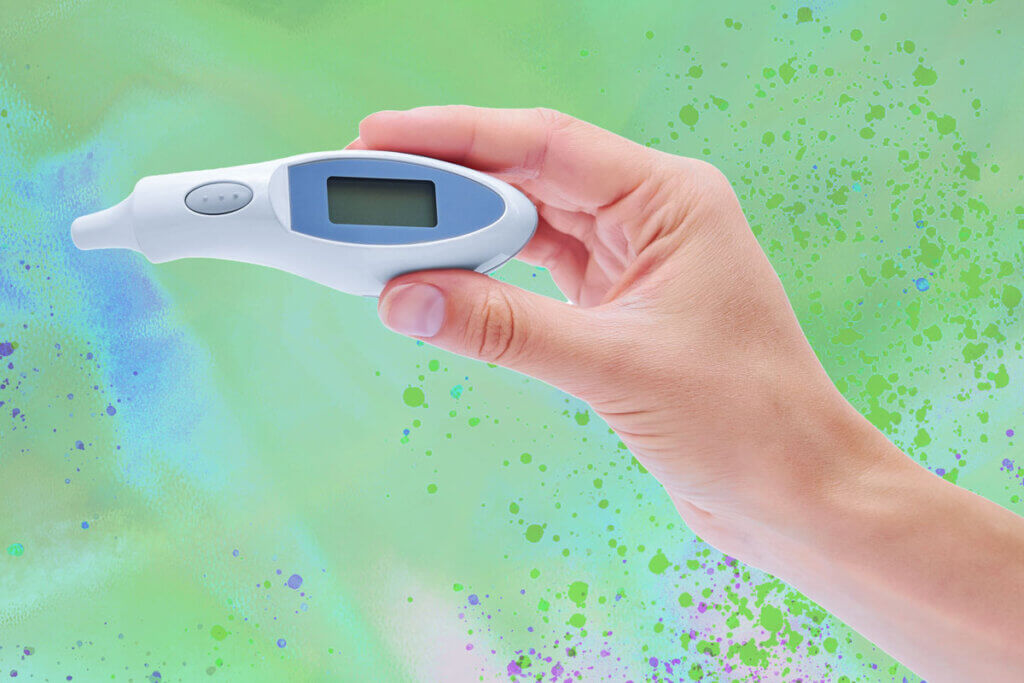
In the meantime, thanks to technical progress, there is a choice between traditional contact thermometers and modern infrared thermometers, such as the ear thermometer or the forehead thermometer.
Which thermometer measures most accurately?
The rectal measurement method with a contact thermometer is the most accurate. However, for most measurements, the very accurate, non-contact measurement with ear thermometers is also completely sufficient. Basically, the results with a contact thermometer, with the exception of the measurement under the armpits, are very accurate but take a little longer: not infrequently up to one minute. When taking a temperature in the mouth, it is also important not to eat or drink anything hot or cold half an hour beforehand. Some people find direct contact with the thermometer disadvantageous. Rectal measurement in particular is very unpopular, which is especially true for children, and can lead to injuries in the worst case if done improperly. Especially with small children, it is often difficult to motivate them to stay still. Fidgeting may lead to inaccurate results or even make it impossible to take a temperature.
When using contact thermometers, there are three measuring points
There are three ways to take a temperature with a contact thermometer: rectally, in the mouth and under the armpits.
- Rectally: The thermometer is inserted into the anus. This is still the most accurate way to take a temperature.
- Mouth: The thermometer is placed under the tongue, as far back as possible in the so-called heat pockets.
- Armpit: The thermometer is stuck under the armpits. This is certainly the simplest, but also the least accurate method.
The ear thermometer is ahead
All these difficulties do not arise with an ear thermometer. When it comes to checking as quickly as possible whether you already have a temperature or whether it is rising rapidly, infrared thermometers have a clear advantage. When used properly, ear thermometers give very accurate readings within one to five seconds. In addition, many thermometer manufacturers offer models specially designed for children. Sick children are naturally particularly snivelling and impatient. That is why ear thermometers are especially popular with parents, who can save their children a lot of stress and anxiety this way.
Temperature differences between the different measuring methods
The measurement of the temperature at the eardrum is between 0.3 and 0.5 degrees lower than the rectal measurement.
The forehead thermometer is somewhat less accurate
Alternatively, parents like to use forehead thermometers, such as those produced by Withings. These thermometers measure the body temperature on the forehead, or more precisely on the temple. Especially when children have an ear infection, this measurement method can be used. The forehead thermometer also works by infrared radiation and provides a measurement result in no time at all. This offers parents the possibility to measure the temperature of the sick child even while he or she is sleeping without noticing anything. This is of course a very convenient method. However, forehead thermometers have the disadvantage that they do not measure as accurately as ear thermometers.
Pro points
- Measure temperature unnoticed
- No pain in case of inflammation of the ear
Drawbacks
- Not as accurate as ear thermometers
Things to know for the purchase
The purchase of an ear thermometer is definitely recommended. An ear thermometer is the perfect choice for everyday use, for routine checks or when things have to be done quickly. However, before buying, some aspects should be weighed up and attention should be paid to some decisive criteria such as ergonomics, quality and measuring accuracy.

Is the use of an ear thermometer sufficient?
In most cases, yes. If you want to be on the completely safe side, you should think about buying a digital contact thermometer as well as an ear thermometer. The contact thermometer cannot be beaten in terms of accuracy. And if a delicate course of disease makes it necessary to measure to a tenth of a degree, the contact thermometer promises a high degree of safety. In terms of comfort and speed, however, conventional clinical thermometers cannot hold a candle to the ear thermometer. Combine the advantages of an ear thermometer with those of a contact thermometer.
What should I look for when buying an ear thermometer?
Basically, an ear thermometer is suitable for users of all ages. Infants under the age of six months are excluded. Nevertheless, some considerations should be made before buying such a thermometer. As far as the technical aspect is concerned, the numerous devices on the market do not differ much from each other. The situation is different when it comes to the quality and functionality of the individual models. Infrared thermometers for the ear, for example, are not suitable for outdoor use. Since the devices are very sensitive, high or low outdoor temperatures can lead to incorrect measurement results. Ear thermometers are something for home use. So if you want to go camping or hiking, or even plan a holiday overseas and don’t want to do without your clinical thermometer, you should rather go for a classic contact thermometer. The ear thermometer needs a constant room temperature to function properly.
The ergonomics of the device
The purchase decision should take into account the situations in which the ear thermometer will mainly be used. The only age-related restriction concerns babies under six months. The ear canals of babies are still too small for the use of an ear thermometer. With toddlers, on the other hand, it is possible to vary the size of the measuring tip of the thermometer. Children are growing and this also applies to the ears and the auditory canals. In order not to leave any permanent damage, users should measure carefully and with a suitable measuring tip.

Not only for the little ones, but also for the older ones, many manufacturers now offer specially optimised models. Some devices have colour displays and show the temperature in green, yellow and red. Red signals that it is time to see a doctor. Especially when vision and hearing are deteriorating, seniors can take advantage of ear thermometers with extra-large displays or temperature announcements. Many ear thermometers also have integrated audiovisual warning systems that sound the alarm in the event of incorrect measurements.
Combination of ear and forehead thermometers
Consumers who suffer from frequent ear infections and still do not want to do without contactless fever measurement can use a combined ear-forehead thermometer.
Quality
Basically, ear thermometers are somewhat more expensive than the simple digital contact thermometers. On average, the models are priced between 10 and 80 euros. Sanitas, for example, offers a combined ear-forehead thermometer for just under ten euros.
The infrared technology used is more sophisticated and cost-intensive, and this is particularly noticeable in the workmanship of the devices. However, since the purchase of a clinical thermometer has a rather long-term character, it is certainly worthwhile to spend a little more money. The selected ear thermometer should be water-resistant for reasons of hygiene. That way it can be cleaned more thoroughly. You can make it a little easier and avoid thorough cleaning if you use disposable protective caps for the measurement.
Potential additional costs
The disposable protective caps are especially useful if the ear thermometer is not waterproof. After use, the old cap is disposed of and replaced with a new one for the next measurement. This procedure is advisable for hygienic reasons. Especially if the thermometer makes the rounds in the family, the caps are definitely an advantage from a medical point of view. The disadvantage is that the plastic protective caps cause costs and additional waste. In the interest of environmental protection, users should consider whether they think the additional waste generated by taking a temperature is necessary.
The operating time
The operating time of the ear thermometer also plays a central role in the purchase decision. If the battery is weak, there is a risk that the digital display will suffer, which may result in incorrect readings or even indecipherable readings. Most ear thermometers require batteries. This results in additional costs. In addition, batteries should be disposed of as hazardous waste. However, there are already ear thermometers that use rechargeable batteries. From an energy, environmental and financial point of view, it is definitely advisable to consider the rechargeable battery variant.
Measurement accuracy, measurement duration and result memory
Correctly used, ear thermometers achieve extremely accurate measurement results. The measurement at the eardrum allows accurate conclusions to be drawn about the body temperature because the blood vessels running there are connected to the blood circulation of the brain. Incorrect measurements occur when fever thermometers are used incorrectly. Especially with ear thermometers, it is highly advisable to study the instructions carefully. Devices warn of incorrect results by means of integrated alarm signals.
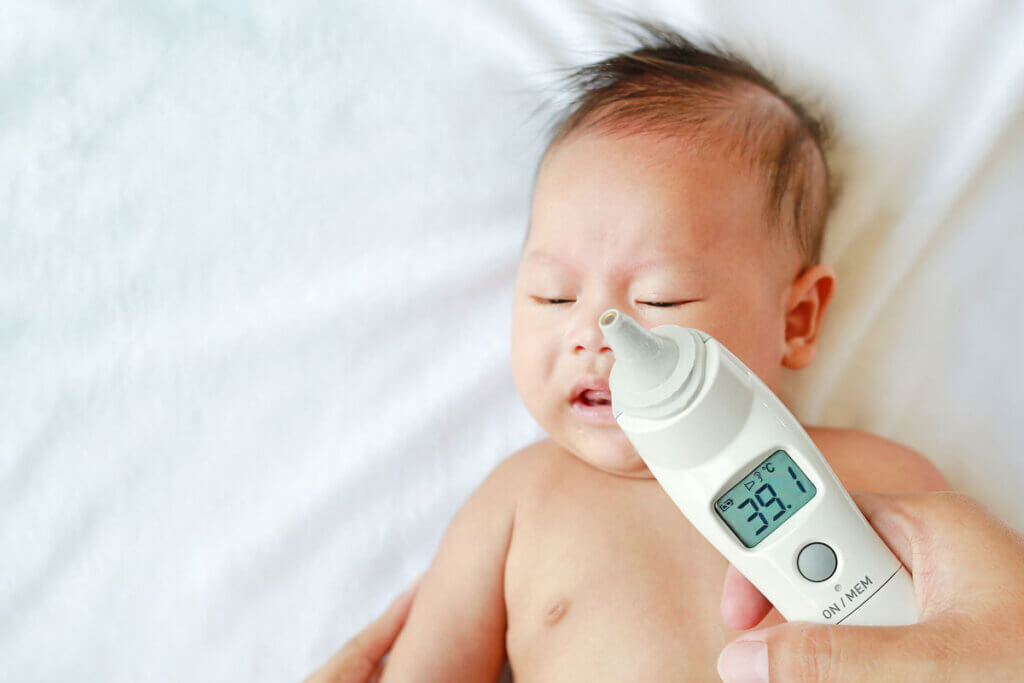
Ear thermometers that have an integrated measurement memory are extremely practical. The models store up to 20 previous measurement results. In this way, previous fever measurements can be traced more easily and the course of the disease can be better assessed. For users who are dependent on regular control measurements for medical reasons, an ear thermometer is the perfect companion.
Multifunctional temperature meters
Some ear thermometers are multifunctional: they can also be used to measure room and surface temperatures. When buying these devices, you should consider up to which degree the measurements still provide accurate results.
Additional functions
n the past, thermometers were only used to measure fever. The models may have differed in design and workmanship, but as far as the technical components and performance were concerned, they were very uniform. The demands of the users were correspondingly low. Nowadays, things are different: the ear thermometers on offer are supposed to satisfy people’s needs comprehensively and that is why many manufacturers build in extra features. As far as possible, no customer wishes should remain unfulfilled. The aim is to make the thermometers as comfortable and versatile as possible in order to arouse buying interest.
Illumination
An illuminated display promises better readability of the values shown, especially for older people. Users can also leave the light in the room switched off, for example if they do not want to wake their children when taking their temperature.
Colour scale
The colour scale is a great help. If a user cannot judge for himself whether the fever is too high for the child, grandma or himself, the colour indicators point out the different borderline ranges. If the colour is red, you should definitely consult or inform a doctor.
Announcement or signal
Ear thermometers with automatic temperature announcement or a warning signal in case of fever are extremely practical, especially for people with visual difficulties.
Switchable signal tone
Some devices emit a signal tone when the measurement is finished – which many people find helpful. If the signal is perceived as annoying in a certain situation, it can also be switched off. This can also be the case when taking a temperature of a sleeping child.
Positioning aid
Last but not least, ear thermometers help to find the right place in the ear for the measurement. This function can be a great and important help, especially for users who are not yet familiar with the device. After all, the accuracy of the measurement depends on the correct positioning of the probe.
How to take a temperature correctly
To ensure that the temperature measurement with the ear thermometer is free of complications, it is important to carry out all steps calmly and to check the conditions first. The ear should be clean and free of earwax. Dirty ears are often an issue, especially with children. If there is an inflammation of the ear canal, the ear thermometer unfortunately cannot be used. Furthermore, it should be avoided to lie on the ear in question before the planned fever measurement. If you observe these points, you will obtain the most accurate values possible.
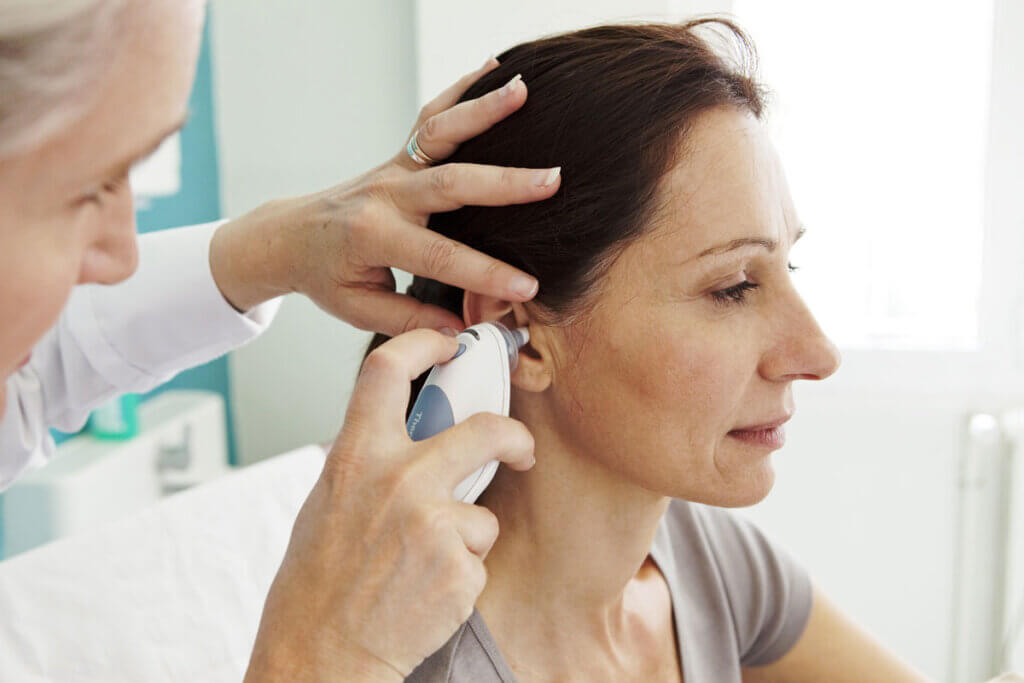
How do I get an accurate result with the ear thermometer?
The most important thing when taking the temperature in the ear is to position the ear thermometer correctly. To do this, the ear must be pulled back slightly and slightly upwards to expose the ear canal. The tip of the thermometer, the measuring probe, is now placed exactly above the eardrum and measures the temperature prevailing there. The whole procedure takes only a few seconds at best, provided that the hand movements are correct. Since the professional handling of an ear thermometer requires some practice, it is extremely useful to take a few test measurements before you really need it.
In the following, we will show you how a measurement with an ear thermometer works:
- Press the start button of the device. If necessary, put on a new protective cap.
- The ear thermometer signals the start of the measurement process.
- Pull the ear back a little and slightly upwards, in the case of small children straight back, so that the ear canal is exposed and the ear canal is visible.
- Now point the measuring tip at the eardrum.
- After a few seconds, read the measured value from the display.
- As soon as the measurement is complete, the device emits a signal and displays the result.
From how many degrees Celsius is a fever dangerous?
According to the Apotheken Umschau, the following guide values apply:
| Celsius (adults) Body temperature in degrees | Celsius (children) | Potential diagnosis |
| 36,5 to 37,4 °C | 36,5 to 37,5 °C | Normal temperature |
| 37,5 to 38,1 °C | 37,6 to 38,4 °C | Elevated temperature |
| > 38,2 °C | From 38,5 °C (babies from 38 °C) | Fever |
| From 39 °C | From 39 °C | High fever |
| From 40 °C | From 40 °C | Extremely high fever (hyperpyrexia) |
Image 1: © VadimGuzhva / stock.adobe.com | Image 2: © Dan Race / stock.adobe.com | Image 3: © Sviatoslav Kovtun / stock.adobe.com | Image 4: © Tan Kian Khoon / stock.adobe.com | Image 5: © Syda Productions / stock.adobe.com | Image 6: © zilvergolf / stock.adobe.com | Image 7: © RFBSIP / stock.adobe.com

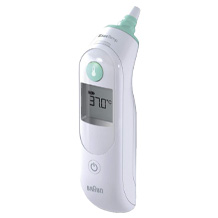
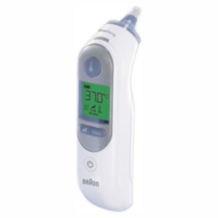
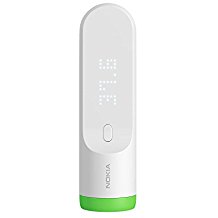
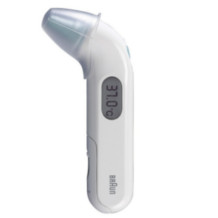
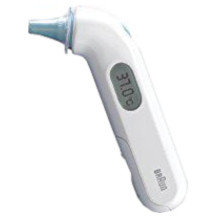
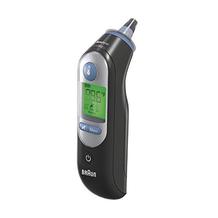
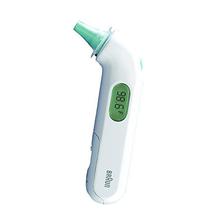
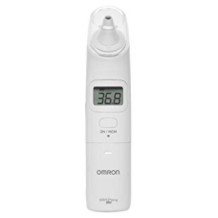
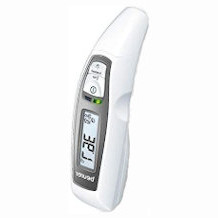
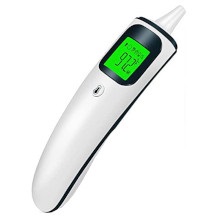
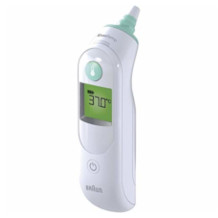


 20,907 reviews
20,907 reviews

